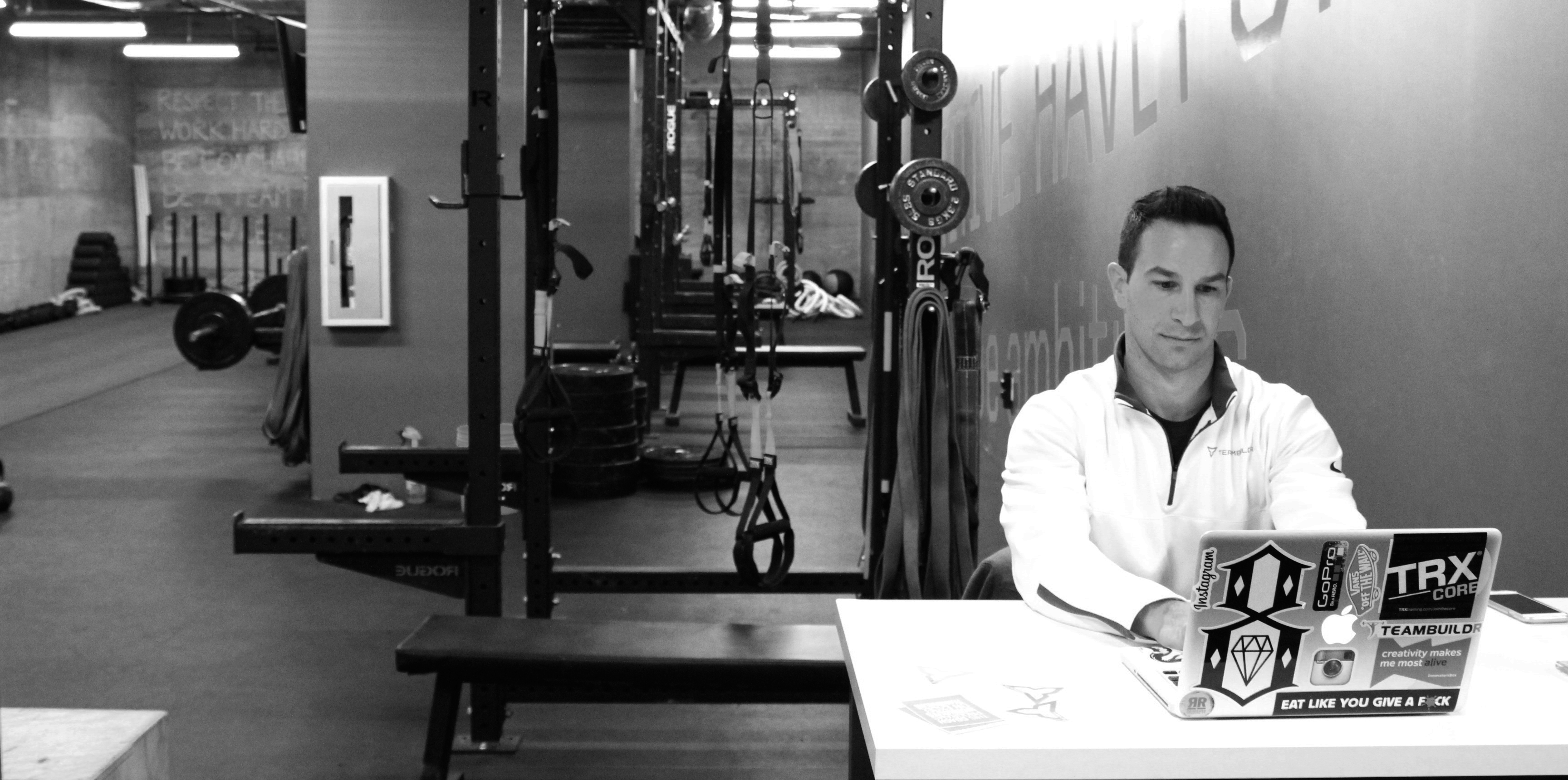“You have the grip of a 90-year-old woman.”
Ah, that comment still is burnt into my soul. I was getting into strongman competitions back in the early 2000’s. At that time it was significantly harder to find anyone who actually trained with strongman implements, so when I found someone close to my home I was going to be there every chance I could. Like you would hope for, the gym was a converted garage stall that had every sort of strongman implement you could dream of. The guys training there were a great bunch of people, everyone was strong, everyone had an ego, and everyone talked a massive amount of trash to each other. I don’t remember what we had more of in that gym: chalk or testosterone.
We were training farmers that day and had worked ourselves up to what I thought was a decent amount of 250 pounds a hand, when we decided to slap another set of fake plates (otherwise known as 35’s) on. That’s 320 pounds per hand if you are keeping score at home. I was the last one in the rotation, and all three other guys took the farmers walk down 60 feet, around the cone, and back to the start line. Now it was my turn - all chalked up, I took my grip, and nothing. It was like there was a giant set of magnets under the bars. All that happened was a struggle and then I would lose grip on the handles. Not just one or two times, but I took five attempts at that weight. Sure, I was pissed off and embarrassed, but I found out my biggest weakness. My grip. Like usual, my mind started racing and I wondered if a lack of grip strength was effecting my performance, how was this affecting the athletes that trust me to improve their performance?
After taking a close look at all of our teams, I saw that I was grossly under-training their grip and hands. Basketball players were jamming fingers, football players had people escaping tackles, volleyball players were having hand and finger injuries, and all the other teams were losing out of strength and power improvements because they were losing the bar in their hands. This realization was a slap in the face. During the training sessions, we were indirectly working grip with barbells, dumbbells, and kettlebells which I though was enough. It wasn’t and it was time to fix it.
When looking at the different grip, there are three types of grip strength: a pinch, crush, and twist grip. Pinch grip exercises focus on just using the thumb and finger tips to secure an object. For crush grip exercises, think of anything that you are trying to close your whole hand around and, well, crush it like an empty pop can. Lastly, the twist grip is using your wrist to turn something forward or backwards. There are some other grip styles that I found out from talking to our local rock climbing expert, but those were very specific to climbing and so I decided to focus on the pinch, crush and twist types of grips.
Anytime I am debating on changing anything in our workouts I run it through my filter system. Basically it’s 4 questions that allow me to think on paper to make sure that we are making a good decision on changing something up. Here are my actual notes from when I decided on programing grip work as a recovery exercise.
- Is this an exercise that athletes can easily do on their own, and is unique enough to keep their attention? Yes, most people have never seen anything like these exercises before they get into our gym.
- Do we have or can we make the equipment needed for this exercise? Yes, there are plenty of pull up bars for bodyweight exercises, extra 45’s, 25’s kettlebells and dumbbells are always available.
- Is this exercise so simple that you could coach a 5th grader to do them right? Yes, all you have to do is “Pick it up until it drops. Make sure to have fast feet though!”
- Is this exercise going to impede the training goal for the current training block? No, grip work will not fatigue the central nervous system and no one will need an oxygen tank to help them breathe after a set. The notable exception is not to fatigue the athletes’ hands before deadlifts or any of the Olympic variations.
Since the grip exercises receive all yeses on the screening tool, we went ahead adding one style at a time. The very first one was the pinch grip it can be taught really fast with no set up required, except for some chalk and open space. Next was using the crush grip because we could add it in to exercises that people were already doing but now they have the extra difficulty of my low tech solution of holding on to a towel attached to the bar. The twist grip, took me a little longer to come up with an idea for it and this is my last level of grip training. Let’s look at these ideas a little more.
Pinch Grip
To really work on the pinch grip, start with two sets of plates and put them together front to back. I begin our male athletes with two, 45 pound plates and the female athletes with two 25’s. In our gym, we don’t have metal plates anymore, which is a blessing and a curse for grip work. The bumper-style plates are easier to grip (with rubber being easier to grab than the smooth metal), but these bumpers are also thicker than standard metal plates, making it more difficult for people with smaller hands. Whatever style plates you have, stand them up, then put the plates face to face (so that the backs of the plates are facing out). Pinch the plates between your thumb and fingers and pick them up. For the first couple of runs, chalk will help with your grip, but as your grip improves slowly wean yourself off the chalk. When you are ready to step up to a new challenge, try the single hand version of the plate pinch as shown in the pictures. The final and most difficult evolution of the plate pinch is to add movement to this pinch, in the version of a plate flip. Here is a video for it. Finishing with a mic drop moment is not needed, but it is deeply satisfying.
Crush Grip
Since a crush grip simulates closing your hand to make a fist and crushing anything in its way, using something as simple as a towel should be enough to accomplish training for it. Both of these examples, involves the athlete doing some sort of pulling exercise, and the only thing I ever tell athletes is to keep their grip on the towel, no wrapping the towel around your hand. Towel Pull Ups are about as easy as it gets, simply hang two towels from a pull up bar and start your reps from there. Partner Towel Rows take a little more coordination since you are pulling against another person and both of you must be in sync. I coach a three second eccentric tempo and both people hold the towel in their same hand which will give you an angled pull and as long as they keep their chests squared up this drill will also double as an anti-rotation drill for the torso too.
Twist Grip
Lastly, my main go to exercise that targets the twist grip is a KB Bar Twist. As you can see, a standard Olympic bar is set about at shoulder height, and a weight is tied to a stretch-band while the other end is looped around the sleeve of the bar. What you don’t see is a 45 pound plate on the opposite side to provide a counter balance to the kettlebell hanging from the bar. When I program this exercise, I talk about each rep is going up with wrist flexion (turning your palm down) with a controlled eccentric with wrist extension (turning your palm up). The next rep, just go the other way: extension, then flexion. These examples of the three of the grip exercises types (pinch, crush, and twist) are a starting point for getting strong hands, since I believe that you are only as strong as your grip allows you to be.
Those are the three areas I attacked with myself and my athletes. Our hands got stronger, and over time I heard from our athletic trainers that they were seeing fewer and fewer people seeing them about finger issues or needing to buddy tape fingers together. As for myself, my grip was still ultimately one of my weak points in strongman, it got to a point that I was at least competitive in events like the farmers walk. So in that case, all of this grip work was a success both personally and professionally.
Now, I hear from the athletes that I have a reputation about being obsessed about training their grip. That’s true, considering I’ve expanded my personal grip training to a point where I’ve closed the #2.5 Captains of Crush gripper, rolled up an aluminum frying pan, bent 16 penny nails, and folded 100 bottle caps in 5 minutes. I’m proud of those accomplishments, but what I’m more proud about is what I’m seeing from our athletes. While I don’t expect the athletes to do the same things as I have done, I do expect our athletes to have a grip that will distinguish them from other people. I’m not talking about them acting like a Tommy Tough guy that is trying to shake your hand way too hard for way to long. I’m talking about them being able to do their job and not question their ability to do something simple like catch a ball or grab a jersey, or yes even shake someone’s hand the right way.
I see the same thing year after year. We have these freshmen come in to the program having done nothing but bench and squat their entire life and they think they're strong. They all have this moment when we take the bar out of their hands and force them to use their hands independently by using ropes, towels, kettlebells, dumbbells, and pinching plates where they look at me like I’m crazy. Which I might be, but there is always a method to my madness. Slowly these freshmen start losing their soft hands that have never seen callous. Slowly these freshmen begin to express the strength and power that they have generated from their hips though their hands. Slowly these freshmen start to realize the importance of grip strength and that you are truly only as strong as your hands are.
Subscribe to our blog
Subscribe to receive the latest blog posts to your inbox every week.
Related posts

A Strength Coach's Lie: Tracking Yourself to Death

Level Up Your Programming with Unilateral Training


